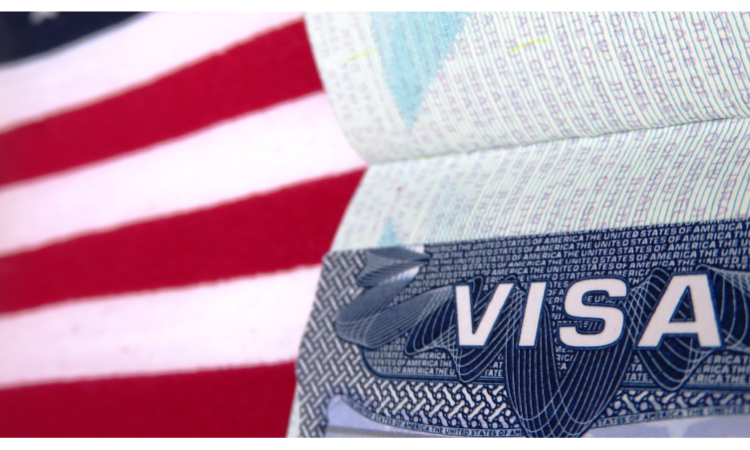Introduction to U.S. Visas
type P visa
An overview of the spread of U.S. Visas we cover.
online registration

To enter the U.S., generally a person will be in need of a visa, and there are about 185 different types of U.S. visas, that can be mostly put into two main categories:
- Immigrant visas, which are issued for permanent residence in the United States.
- Non-immigrant visas – these are visas issued for temporary periods such as for tourism, business, family visits, study, work, or transit.
It should be noted that a U.S. visa does not authorize entry into the United States, or a stay in a particular status, but only serves as a preliminary permission to travel to the United States and to seek admission at a port of entry. A final decision on whether to admit the person to the U.S. is made at the port of entry by a U.S. Customs and Border Protection (CBP) officer.
It is very important to be mindful that all representations and documents made and presented to the consulate, immigration service and, or to the courts, can have lasting negative effects, if such are found to be untrue. Thus, it is vital that a person submits sincere applications when seeking any immigration benefit. That being said, merely because a negative decision is given, in some circumstances this can be reversed, or corrected in certain situations and thus the need to consult with qualified persons.
Persons entering the U.S. will be given what is known as a Form I-94 (or I-94W for nationals of the Visa Waiver Program countries, persons traveling to the U.S. for short visits), which serves as the official document authorizing the stay in the United States in a particular status, for a particular period of time.
It is important that you seek the advice of skilled and knowledgeable persons when applying for a visa, as it may seem straightforward but the U.S. immigration system is complex, and applications are often rejected/denied, which can have lasting effects on your future chances in traveling and, or residing in the U.S..
To enter the United States, you require a visa or be from a country that is on the visa waiver program (please see attached – VWP). There are numerous visas, some of which are listed below, with a brief introduction to each.
IMMIGRANT VISAS:
- IR1, CR1 Visa.
- Spouses of U.S. Citizens.
- K-1 and K-3 Visa.
- Fiancé(e) to marry U.S. Citizen, and
- Spouses of U.S. Citizens waiting for approval of an immigrant petition
- IR3, IH3, IR4, IH4 Visa.
- Inter-country adoption of Orphan Children by U.S. Citizens – IR3, IH3, IR4, IH4.
- IR2, CR2, IR5, F1, F3, F4 Visa.
- Certain family members of U.S. Citizens – IR2, CR2, IR5, F1, F3, F4.
- F2A, F2B Visa.
Certain family members of Lawful Permanent Residents (LPR – Green card holders) –
NON-IMMIGRANT VISAS:
- A Visa.
- Diplomat or foreign government official.
- A-2 Visa.
- Foreign military personnel stationed in the United States
- BCC.
- Mexican Border Crossing Card.
- B-1 Visa.
- Business visitor.
- Athlete, amateur or professional.
- Domestic employee or nanny – must be accompanying a foreign national employer.
- Visitor who wishes to obtain medical treatment.
- B-2 Visa.
- Tourism, vacation, pleasure visitor
- C Visa.
- This allows for the transiting through the U.S..
- CW-1 Visa.
- CNMI-only transitional worker.
- D Visa.
- Crew Member.
- E visa.
- Treaty Trader visas (E-1) – This is a visa to facilitate substantial trade, principally between the United States and the treaty country.
- Treaty Investor visas (E-2) – Are visas to allow a person to develop and direct the operations of an enterprise in which the national has invested or is in the process of investing a substantial amount of capital.
- E-3 Visa.
- Australian professional specialty.
- F Visa.
- Student, Academic.
- Vocational – M visa.
- H-1B Visa.
- Specialty occupations in fields requiring highly specialized knowledge.
- Physician.
- H-1 B1 Visa.
- Free Trade Agreement (FTA) Professional:
Chile, Singapore
- H-2B Visa.
- Temporary agricultural worker.
- H-3 Visa.
- Training in a program not primarily for employment.
- I Visa.
- Media, journalist.
- J Visa.
- Exchange visitors.
- Au pair.
- Professor.
- Scholar.
- Teacher.
- Physician.
- L Visa.
- Inter-company transfers.
- O Visa.
- Foreign national with extraordinary ability in Sciences, Arts, Education, Business or Athletics.
- G1-G5, & NATO Visa
- issued to diplomats, government officials, and international organization employees who are visiting the United States temporarily for a governmental purpose. Persons associated with NATO.
- P Visa.
- Performing athlete, artist, entertainer.
- R Visa.
- A worker employed in a religious capacity.
- V Visa.
- Non-Immigrant Visa for spouse and children of lawful permanent residents.
- T Visa.
- Victims of human trafficking.
- Q Visa.
- International cultural exchange visitor.
- TN/TD Visa.
- NAFTA professional workers from Mexico, Canada.
- V Visa.
- Victim of Criminal Activity
EMPLOYMENT-BASED VISAS:
- Employment based immigrants including preference groups:
- Priority Workers (First) – E1.
- Professionals holding Advanced Degrees and persons of Exceptional Ability (Second) – E-2.
- Professionals and other skilled and unskilled workers (Third) – E-3.
- Certain Special Immigrants (forth) – S.
- Employment Creation and Investors (Fifth) – C-5, T-5, R-5, I-5.
- Religious Workers -SD, SR.
- Iraqi and Afghan Translators and Interpreters, SI.
- Iraqis and Afghans who worked for or on behalf of the U.S. Government, -SQ
Interested in our services? We’re here to help!
We want to know your needs exactly so that we can provide the perfect solution.
Let us know what you want and we’ll do our best to help.
